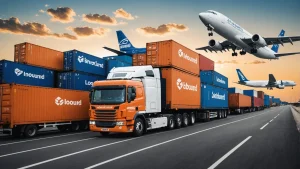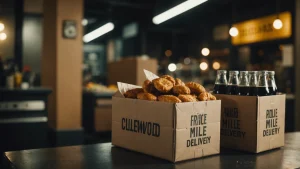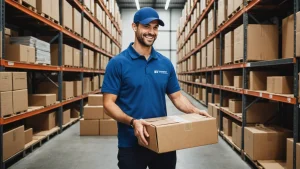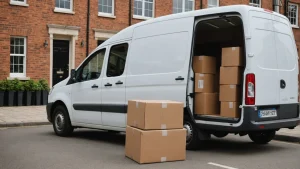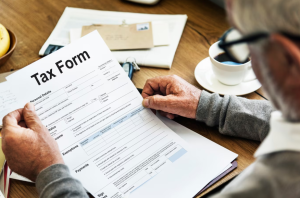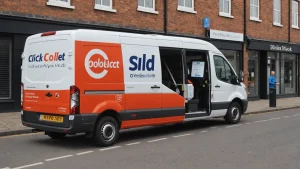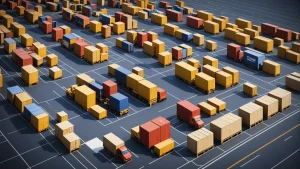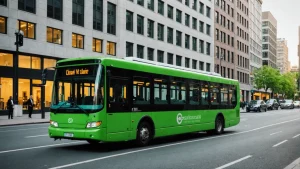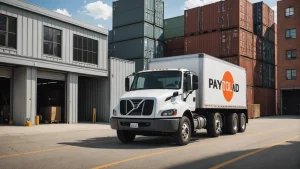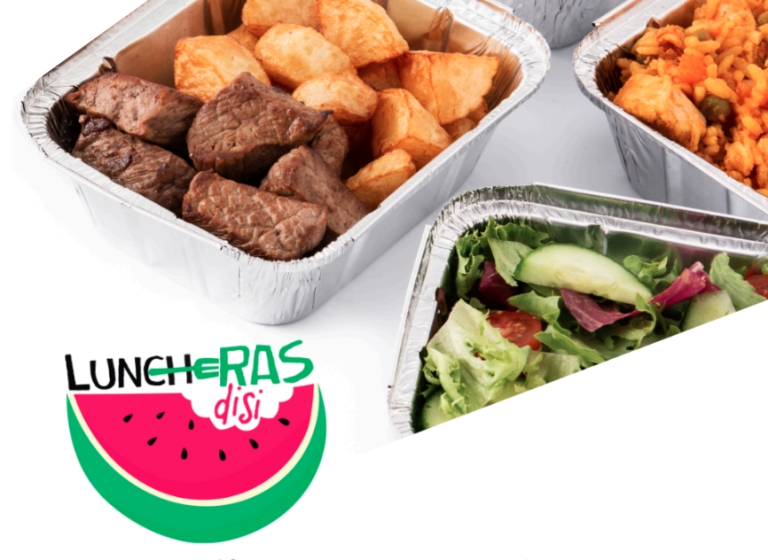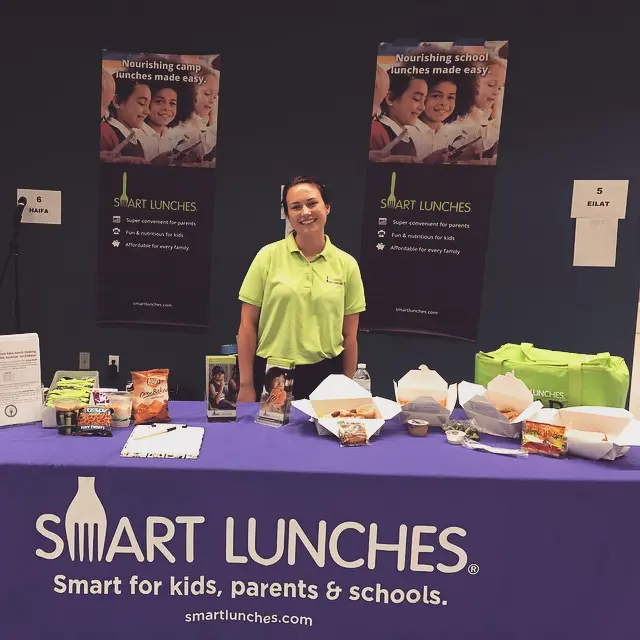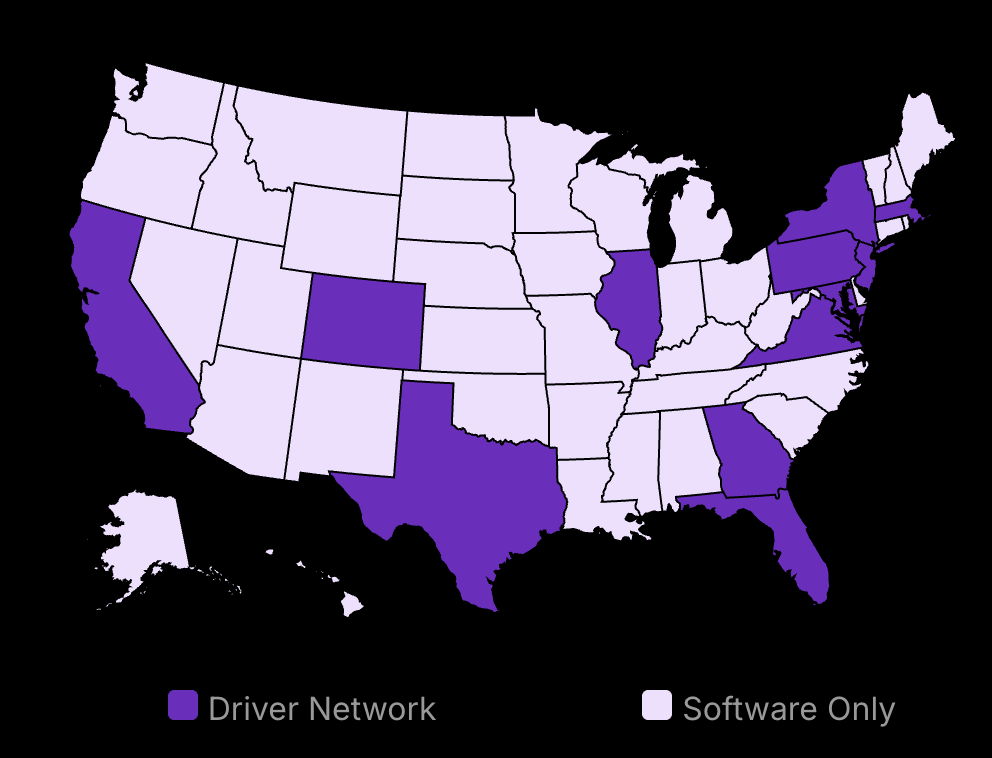In the competitive edge fast-paced world of e-commerce, last-mile delivery has emerged as a critical differentiator. It’s the final touchpoint that can make or break the customer experience. Analyze the intricacies and significance of final leg delivery, unveiling methods to refine this essential phase and elevate customer satisfaction.
As we navigate through 2024, businesses are realizing the immense potential of optimizing their last-mile operations. From enhancing customer satisfaction to driving efficiency and profitability, the benefits of last-mile tracking are clear. Thus, prioritizing the management of deliveries is essential for businesses aiming to excel in service delivery and maintain competitive edge.
But what exactly are these advantages, and how can companies harness them effectively?
Let’s unbox the 10 key benefits of last-mile delivery in 2024 and explore how they’re revolutionizing the way businesses connect with their customers.

Save 80% of delivery management time
We handle everything:
- Dedicated operations manager
- Real-time tracking dashboard
- Automated customer notifications
- Urgent issue resolution
What Are the Benefits of Last Mile Delivery?
Last-mile benefits include enhanced customer experience, increased efficiency, and improved profitability
Optimizing last-mile delivery leads to faster, more reliable deliveries and cost savings
Efficient last-mile delivery contributes to higher customer satisfaction and loyalty
Last-mile delivery, the final step in the delivery process where goods are transported from a distribution center or hub to the end customer’s doorstep, plays a crucial role in shaping the overall customer experience. As e-commerce continues to grow, businesses are recognizing the importance of optimizing their last-mile delivery operations to stay competitive and meet evolving customer expectations. Delve into the intricacies of improving the final leg of delivery, uncovering innovative approaches to streamline operations and secure customer satisfaction.
General Benefits
53% of total shipping costs are related to last mile delivery. Optimizing this final stage can lead to significant cost savings. 92% of respondents agree that optimizing last mile delivery leads to significant operational cost savings. Companies are already seeing major benefits from focusing on this final delivery stage. When working with a meal kit company, optimizing last mile delivery improved on-time delivery from 92% to 99%, reduced delivery errors by 40%, and cut total credit and refund costs by 61%. This shows the potential for cost reductions through last mile optimization.
Enhanced Customer Experience
Customers expect their orders to arrive quickly and reliably in today’s fast-paced world. By optimizing last-mile delivery, businesses can offer faster and more precise delivery options, such as same-day deliveries same-day delivery, or specific time windows. This level of flexibility caters to individual customer preferences, resulting in higher satisfaction and a more positive brand perception.
Faster, More Reliable Deliveries
Implementing advanced route optimization software and real-time tracking capabilities enables businesses to minimize delays and reduce the likelihood of failed deliveries. Companies can build trust with their customers and foster long-term loyalty by ensuring that packages arrive on time and in perfect condition. Discover strategies to enhance your small business’s last-mile delivery, ultimately cutting expenses and overcoming common hurdles in the process.
Customer Experience
84% of consumers would not shop with a retailer after a bad delivery experience. Providing a great last mile experience is crucial for customer retention. 70% of consumers say speed, convenience and friendly delivery service matters most. Meeting these expectations through last mile optimization can boost customer satisfaction.
Increased Efficiency
Optimizing last-mile delivery processes leads to significant improvements in operational efficiency. By leveraging advanced technologies and data-driven insights, businesses can streamline their last-mile delivery software operations, reduce costs, and maximize resource utilization.
Optimized Routes and Real-Time Tracking
Implementing intelligent routing algorithms and real-time tracking systems allows businesses to optimize delivery routes based on traffic conditions, weather, and driver availability. This minimizes delays, reduces fuel consumption, and ensures that drivers are utilizing their time effectively. Real-time tracking also enables proactive communication with customers, providing them with up-to-date information on their package’s delivery location and estimated arrival time. Looking for strategies to optimize your logistics? Learn how implementing smart delivery management can elevate client happiness and streamline costs.
Automated Dispatching and Driver Management
Automating the dispatching process and driver management tasks can significantly reduce manual effort and minimize the risk of human error. By assigning orders to the most suitable drivers based on factors like location, capacity, and skill set, businesses can ensure timely and efficient deliveries. Automated systems also simplify driver communication, enabling real-time updates and reducing the need for manual intervention.
Cost Reduction
Efficient last-mile delivery operations contribute to significant cost savings for businesses. By optimizing routes, reducing failed deliveries, and minimizing resource waste, companies can lower their operational expenses and improve their bottom line.
Cost Effectiveness
Implementing real-time tracking, route optimization, and other last mile technologies can significantly reduce costs. Leveraging these tools is key to optimizing the final delivery stage.
Efficient Routing and Resource Allocation
Intelligent routing algorithms help businesses identify the most cost-effective and efficient delivery routes, considering factors like distance, traffic, and driver availability. By minimizing unnecessary mileage and optimizing resource allocation, companies can reduce fuel costs, vehicle wear and tear, and labor expenses.
Reduced Failed Deliveries
Failed deliveries are a significant cost burden for businesses, as they often result in costly redelivery attempts. By implementing measures to reduce failed deliveries, such as providing accurate and reliable delivery time estimates and enabling customer communication, companies can minimize these expenses and improve overall profitability.
Improved Profitability
The benefits of optimized last-mile delivery extend beyond cost savings, directly impacting a company’s profitability. By enhancing the customer experience and increasing operational efficiency and cost-effective delivery operations, businesses can drive revenue growth and secure a competitive advantage in their market.
Higher Customer Satisfaction and Loyalty
Providing a seamless and convenient last-mile delivery experience leads to higher customer satisfaction and increased brand loyalty. Satisfied customers are more likely to make repeat purchases, recommend the brand to others, and spend more on each transaction. This positive word-of-mouth and increased customer lifetime value contribute directly to a company’s profitability.
Customer Experience
72% of online shoppers prioritize convenient delivery time slots over fast delivery. Providing flexible delivery windows is key to meeting customer needs. 80% of shoppers expect smart tracking for their orders in 2023. Real-time tracking transparency is now a baseline expectation for a great last mile experience.
Efficient Operations and Cost Savings
The cost savings achieved through efficient last-mile delivery operations directly impact a company’s bottom line. By reducing expenses related to fuel, labor, and vehicle maintenance, businesses can improve their profit margins and allocate resources to other areas of growth and innovation.
Competitive Advantage
In the highly competitive e-commerce landscape, providing exceptional last-mile delivery services can set a company apart from its rivals. By offering faster, more reliable, and more flexible final mile delivery options, businesses can attract and retain customers, ultimately leading to increased market share and revenue growth.
Example
One example is a logistics company that partnered with a BPO provider like Kivo BPO. By outsourcing certain business processes and leveraging the BPO's expertise, the logistics company was able to optimize customer service, data management, and back-office support. This allowed the company to focus on its core operations while benefiting from improved efficiency and customer satisfaction.
Last-Mile Benefits: How Last Mile Delivery Optimization Drives Efficiency
Optimizing last-mile delivery boosts efficiency through real-time tracking, dynamic routing, and automation
Increased visibility and streamlined processes lead to reduced costs and improved resource utilization
Real-Time Tracking and Visibility
Last-mile delivery optimization heavily relies on GPS tracking to provide real-time insights into delivery status and driver location. This increased visibility enables businesses to proactively resolve issues and communicate with customers, ensuring a smooth delivery experience. Seeking to enhance your food and beverage last-mile delivery? Learn how to execute efficient and prompt delivery operations with our expert strategies and advice.
With real-time tracking, dispatchers can monitor the progress of each delivery and quickly identify any potential delays or problems. They can then take immediate action, such as contacting the driver, reassigning the delivery, or informing the customer of the updated estimated time of arrival (ETA). This proactive approach minimizes the impact of unforeseen circumstances and helps maintain customer satisfaction.
Benefits of Real-Time Tracking
Improved customer communication and transparency
Faster issue resolution and problem-solving
Enhanced fleet management and driver accountability
Fast and Accurate Delivery
88% of consumers will pay for same-day delivery. Offering fast delivery options can drive sales, with 78% more likely to purchase again if they receive same-day shipping. 73% of consumers are more likely to purchase online items with free shipping. Optimizing last mile costs can enable free shipping offers that attract customers.
Dynamic Route Optimization
Another crucial aspect of last-mile delivery optimization is dynamic route optimization. AI-powered algorithms analyze real-time data, such as traffic conditions, weather patterns, and driver availability, to create the most efficient routes for each delivery.
By considering these dynamic factors, businesses can minimize delivery times, reduce fuel consumption, and optimize labor costs. Efficient routing ensures that drivers take the shortest possible path to their final destination, avoiding congested areas and adapting to changing circumstances on the fly.
Dynamic route optimization also helps balance workload among drivers, ensuring that no single driver is overburdened while others remain underutilized. This leads to improved resource allocation and overall operational efficiency.
Automated Dispatching and Driver Management
Automating the dispatching process and driver management is another way last-mile delivery optimization drives efficiency. Advanced systems can automatically assign last-mile deliveries back to the most suitable drivers based on factors such as location, vehicle capacity, and driver skills.
This streamlined approach reduces the manual effort required for dispatching, minimizing the risk of human error and saving time. Automated systems can also factor in driver breaks, shift patterns, and other constraints to create optimal schedules that maximize productivity.
Moreover, automated driver management tools provide real-time updates on driver performance, enabling managers to identify areas for improvement and take corrective action when necessary. This data-driven approach helps optimize the workforce and ensures that each driver is operating at peak efficiency.
Seamless Integration with Inventory Management
Efficient last-mile delivery also requires seamless integration with inventory management systems. By connecting delivery operations with real-time inventory data, businesses can ensure that products are always available when needed and avoid stockouts or overstocking.
This integration allows for better planning and forecasting, as managers can anticipate demand and adjust inventory levels accordingly. It also enables more accurate promise dates for customers, as the system can confirm product availability before accepting an order.
Continuous Optimization Through Data Analytics
Last-mile delivery optimization is an ongoing process that requires continuous improvement. By leveraging data analytics, businesses can identify trends, bottlenecks, and opportunities for optimization.
For example, analyzing historical delivery data can reveal patterns in customer preferences, such as preferred delivery times or locations. This information can be used to refine delivery strategies and tailor services to better meet customer needs.
Data analytics can also help identify areas where efficiency can be improved, such as reducing idle time between deliveries or optimizing vehicle loading processes. By continuously monitoring and analyzing performance metrics, businesses can make data-driven decisions that drive efficiency and profitability.
Impact on Business
Data-driven decision-making in last-mile delivery analytics can lead to informed choices that impact operational efficiency and profitability. By adjusting delivery windows, optimizing staffing levels, and selecting optimal delivery partners based on data insights, businesses can improve their delivery capacity and reduce costs.
Elevating Customer Experience Through Last-Mile Delivery Process Excellence
Last-mile delivery plays a crucial role in shaping the overall customer experience. By focusing on excellence in this final stage of the delivery process, businesses can differentiate themselves from competitors and build strong, lasting relationships with their customers. To elevate your delivery process and stand out from the competition, discover the leading last-mile companies that can transform your customer experience.
Flexible Delivery Options
In today’s fast-paced world, customers expect convenience and flexibility when it comes to receiving their orders. Offering a range of delivery options, such as same-day, or next-day delivery next-day, and specific time windows, allows businesses to cater to diverse customer preferences. By empowering customers to choose the most suitable delivery method for their needs, companies demonstrate their commitment to putting the customer first.
Moreover, flexible delivery options can help businesses tap into new market segments. For example, offering same-day delivery can attract time-sensitive customers who need their products urgently, while providing weekend delivery can appeal to those with busy weekday schedules. By adapting to the varying needs of customers, businesses can expand their reach and grow their customer base.
Real-Time Communication and Transparency
Keeping customers informed throughout the delivery process is essential for building trust and reducing anxiety. By providing real-time updates on delivery status and estimated arrival times, businesses can manage customer expectations and minimize the frustration associated with uncertainty.
Transparent communication channels, such as SMS updates, email notifications, and live chat support, allow customers to reach out with questions or concerns at any point during the delivery process. This level of accessibility and responsiveness demonstrates a company’s dedication to customer service and helps to foster a positive brand image.
Furthermore, real-time communication can help businesses proactively address potential issues before they escalate. For instance, if a delivery is delayed due to unforeseen circumstances, promptly informing the customer and providing a revised estimated arrival time can mitigate frustration and maintain customer confidence.
Seamless Returns and Exchanges
A hassle-free returns process is a critical component of a positive customer experience. By implementing a streamlined returns system, businesses can minimize customer effort and frustration, ultimately building loyalty and encouraging repeat purchases.
Offering convenient options for returns, such as home pickup or drop-off at nearby locations, demonstrates a company’s willingness to go the extra mile for its customers. This level of service not only simplifies the returns process but also shows that the business values the customer’s time and convenience.
Additionally, having a clear and customer-friendly returns policy can help to reduce customer apprehension when making a purchase. Knowing that they can easily return or exchange an item if needed provides customers with peace of mind and can encourage them to make more confident purchasing decisions.
Personalized Delivery Experience
Leveraging technology to personalize the delivery experience can help businesses exceed customer expectations and stand out in a competitive market. By collecting and analyzing customer data, companies can tailor the delivery process to individual preferences and needs. Discover upcoming conferences and events focused on last-mile delivery solutions in 2025, ensuring you remain at the forefront of personalized delivery innovations and market demands.
For example, businesses can offer personalized delivery instructions, such as leaving the package at a specific location or providing a preferred delivery time. This level of customization demonstrates a company’s attention to detail and commitment to delivering a truly personalized experience.
Moreover, businesses can use technology to provide value-added services that enhance the delivery experience. For instance, offering a white-glove delivery service for high-value items, where the delivery personnel sets up and tests the product, can provide a premium level of service that sets a company apart from its competitors.
Continuous Improvement and Customer Feedback
To consistently elevate the customer experience, businesses must embrace a culture of continuous improvement. Regularly seeking and acting upon customer feedback is essential for identifying areas of strength and opportunities for growth.
Implementing post-delivery surveys, monitoring social media sentiment, and analyzing customer support interactions can provide valuable insights into the effectiveness of a company’s last-mile delivery processes. By actively listening to customers and making data-driven decisions, businesses can continuously refine their last-mile delivery tracking strategies to better meet evolving customer needs.
Moreover, sharing customer feedback and success stories internally can help to reinforce the importance of customer-centricity and motivate employees to deliver exceptional service. Celebrating wins and learning from challenges can foster a culture of excellence that permeates throughout the organization.
Reducing Costs and Boosting Profitability Through Last Mile Delivery Optimization
TL;DR:
Optimize routes to save fuel and labor costs
Minimize failed deliveries to avoid redelivery expenses
Leverage data analytics for continuous improvement and cost reduction
Route Optimization for Fuel and Labor Savings
Route optimization is a crucial aspect of last-mile delivery that can significantly reduce costs and boost profitability. By optimizing routes, businesses can minimize travel distance, time, and fuel consumption. This not only leads to direct savings on fuel expenses but also enables drivers to complete more deliveries per shift, effectively reducing labor costs. Discover how improving inbound logistics through route optimization can streamline your distribution process and enhance your company’s profitability.
Advanced route optimization algorithms take into account various factors such as traffic patterns, road conditions, and customer preferences to determine the most efficient routes. These algorithms can also dynamically adjust routes in real time based on changing circumstances, ensuring that drivers always take the most optimal path.
Case Study: UPS Route Optimization
UPS, a global leader in logistics, has invested heavily in route optimization technology. By implementing advanced algorithms and machine learning, UPS has been able to reduce its delivery routes by 100 million miles annually, saving millions of dollars in fuel costs and reducing its carbon footprint.
ORION
UPS developed its On-Road Integrated Optimization and Navigation (ORION) system over 10 years, deploying it starting in 2012. ORION uses data from customers, drivers and vehicles to calculate the most efficient routes, considering all scheduled package pickups and deliveries for each day. For each 120-stop route, ORION analyzes over 200,000 options to select the optimal route while meeting customer requirements. UPS has also reduced its CO2 emissions by 100,000 metric tons annually, equivalent to taking 21,000 passenger cars off the road for a year.
Minimizing Failed Deliveries and Redelivery Attempts
Failed deliveries and redelivery attempts are significant cost drains for last-mile logistics operations. When delivery fails due to incorrect address information, recipient unavailability, or other reasons, it necessitates a redelivery attempt. This doubles the cost of the delivery, as the same resources (driver, vehicle, fuel) must be allocated again. To address these operational inefficiencies, it’s essential to understand typical issues in courier services and how to mitigate them for more successful first-time deliveries.
To boost customer satisfaction and customer engagement and minimize failed deliveries, businesses must implement measures such as accurate address verification, delivery confirmation, and proactive customer communication. By ensuring that address information is correct and up-to-date, and by notifying customers of upcoming deliveries and providing them with options to reschedule or redirect if needed, the likelihood of failed deliveries can be greatly reduced.
The Cost of Failed Deliveries
According to a study by Accenture, the cost of failed deliveries in the U.S. is estimated to be around $1.5 billion annually. This includes the direct costs of redelivery attempts as well as the indirect costs of customer dissatisfaction and potential loss of business.
Failure Costs
With an 8% failure rate for first-time deliveries, 300 businesses surveyed paid over $193,000 combined in failed delivery costs.
Last mile delivery accounts for an estimated 28% of total shipping costs.
Retailers can pay anywhere from $1.50 to $4 per mile for the last leg of delivery, plus the cost of redelivery or returns.
Leveraging Data Analytics for Continuous Improvement
Data is a powerful asset in last-mile delivery optimization. By collecting and analyzing data on delivery performance, customer preferences, and operational metrics, businesses can gain valuable insights into areas for improvement.
For example, data analysis might reveal that certain delivery windows have higher failure rates, or that specific geographic areas consistently experience delays. Armed with this knowledge, businesses can make targeted adjustments to their delivery strategies, such as reallocating resources to high-demand areas or offering more flexible delivery options.
Over time, continuous data-driven optimization can lead to significant cost reductions and profitability improvements. By constantly monitoring and refining last-mile operations, businesses can stay ahead of the curve and adapt to changing customer expectations and market conditions.
The Power of Predictive Analytics
Predictive analytics takes data utilization a step further by using historical data to anticipate future trends and challenges. For instance, predictive models can forecast demand surges based on past seasonal patterns, allowing businesses to proactively scale up their delivery capacity.
Optimizing Delivery Fleet and Vehicle Selection
The delivery fleet and vehicle selection play a significant role in last-mile delivery costs. By optimizing the fleet mix and choosing the right vehicles for each delivery scenario, businesses can reduce fuel consumption, maintenance costs, and other associated expenses.
For example, using smaller, more fuel-efficient vehicles for urban deliveries can lead to significant cost savings compared to larger trucks. Similarly, electric vehicles (EVs) or hybrid vehicles can be a cost-effective choice for businesses looking to reduce their environmental impact and take advantage of lower operating costs.
The Rise of Electric Vehicles in Last Mile Delivery
EVs are becoming increasingly popular in last-mile delivery, thanks to their lower fuel and maintenance costs, as well as their reduced environmental impact. Companies like Amazon, UPS, and FedEx have all announced plans to incorporate more EVs into their delivery fleets in the coming years.
Implementing Dynamic Pricing for Peak Periods and Special Requests
Dynamic pricing is a strategy that involves adjusting delivery prices based on factors such as demand, urgency, and service level. By implementing dynamic pricing, businesses can optimize their revenue and profitability during peak periods and for special requests.
For example, during high-demand periods like holidays or major sales events, businesses can charge a premium for expedited or guaranteed delivery services. Similarly, for customers with specific requirements, such as white-glove delivery or installation services, dynamic pricing can help ensure that the additional costs are properly accounted for.
The Psychology of Dynamic Pricing
Dynamic pricing is not just about maximizing revenue; it’s also about understanding and leveraging customer psychology. By offering differentiated pricing options, businesses can appeal to customers’ diverse needs and preferences, from cost-conscious shoppers to those willing to pay a premium for convenience and speed.
By optimizing routes, minimizing failed deliveries, leveraging data analytics, optimizing fleet and vehicle selection, and implementing dynamic pricing strategies, businesses can significantly reduce costs and boost profitability in their last-mile delivery operations. As the e-commerce landscape continues to evolve, those who prioritize efficiency and adapt to changing customer expectations will be best positioned for success. Discover effective ways to improve the last-mile delivery process for small enterprises, including strategies to minimize expenses and overcome common hurdles.
Embracing the Future of Last Mile Delivery
Last-mile delivery in 2024 is all about enhancing customer experience, increasing supply chain efficiency, being one of the most dependable delivery services, and boosting profitability. By leveraging advanced technologies and optimizing processes, businesses can deliver faster, more reliably, and with greater flexibility. This not only leads to happier customers but also streamlines operations and reduces costs.
Implementing real-time tracking, dynamic route optimization, and automated dispatching can significantly improve delivery efficiency. At the same time, offering flexible delivery options and providing transparent communication keeps customers informed and satisfied. By continuously analyzing data and refining processes, delivery companies can further reduce costs and enhance profitability.
Are you ready to take your last-mile delivery to the next level? Embrace the future by investing in the right technologies and strategies. Your customers will thank you, and your bottom line will reap the benefits. Don’t get left behind – start optimizing your last-mile delivery today.




